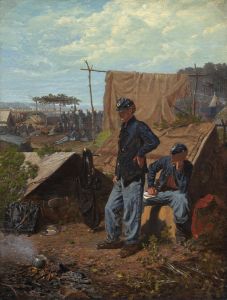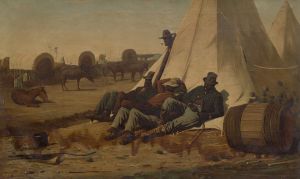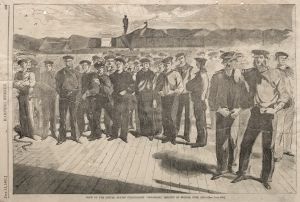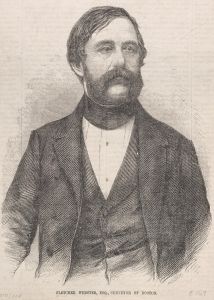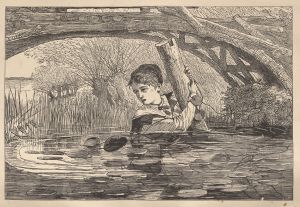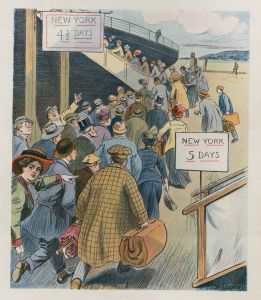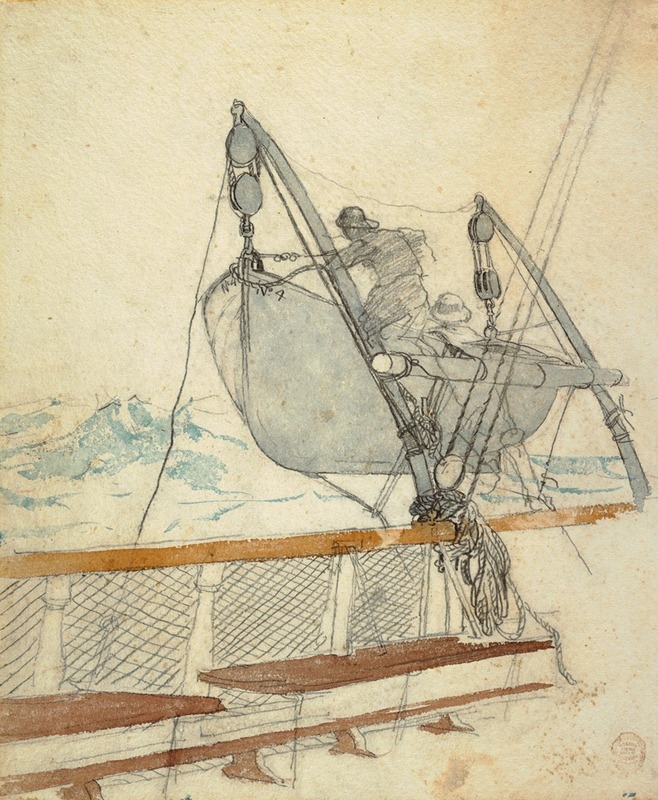
Study for ‘The Signal of Distress’
A hand-painted replica of Winslow Homer’s masterpiece Study for ‘The Signal of Distress’, meticulously crafted by professional artists to capture the true essence of the original. Each piece is created with museum-quality canvas and rare mineral pigments, carefully painted by experienced artists with delicate brushstrokes and rich, layered colors to perfectly recreate the texture of the original artwork. Unlike machine-printed reproductions, this hand-painted version brings the painting to life, infused with the artist’s emotions and skill in every stroke. Whether for personal collection or home decoration, it instantly elevates the artistic atmosphere of any space.
Winslow Homer, an American artist renowned for his marine subjects, created "Study for ‘The Signal of Distress’" as part of his exploration into the themes of human struggle against nature. This particular study is a preparatory work for a larger painting, showcasing Homer's meticulous process in developing his compositions. Although the final painting, "The Signal of Distress," is more widely recognized, the study itself provides valuable insight into Homer's artistic techniques and thematic focus.
Homer was born in 1836 in Boston, Massachusetts, and began his career as a commercial illustrator. He later transitioned to painting, becoming one of the foremost painters of 19th-century America. His works often depict scenes of the sea, reflecting both the beauty and the peril of maritime life. "Study for ‘The Signal of Distress’" fits within this context, as it captures a moment of tension and urgency associated with the sea.
The study, like many of Homer's works, is executed with a keen attention to detail and a strong sense of realism. It likely served as a preliminary sketch to work out the composition and elements of the final painting. Homer's studies often involved experimenting with light, shadow, and the arrangement of figures to convey the desired emotional impact. In this study, he would have focused on the positioning of the figures and the interaction between the human elements and the surrounding seascape.
Homer's interest in maritime subjects was partly influenced by his time spent in coastal areas, such as Gloucester, Massachusetts, and Cullercoats, England. These experiences provided him with firsthand observations of the sea and its impact on human life, which he translated into his art. His works are characterized by their dramatic use of light and shadow, as well as their ability to capture the raw power of nature.
"Study for ‘The Signal of Distress’" is an example of Homer's ability to convey narrative through visual means. Although the study itself may not include all the details of the final painting, it hints at a story of danger and the human response to it. This aligns with Homer's broader body of work, which often explores themes of survival, resilience, and the relationship between humans and their environment.
While the study is a smaller and less detailed work compared to the final painting, it remains an important piece for understanding Homer's artistic process. It reflects his dedication to capturing the essence of a scene and his skill in using art to communicate complex emotions and stories. As with many of Homer's studies, it serves as a testament to his status as a master of American realism and his enduring influence on the art world.







